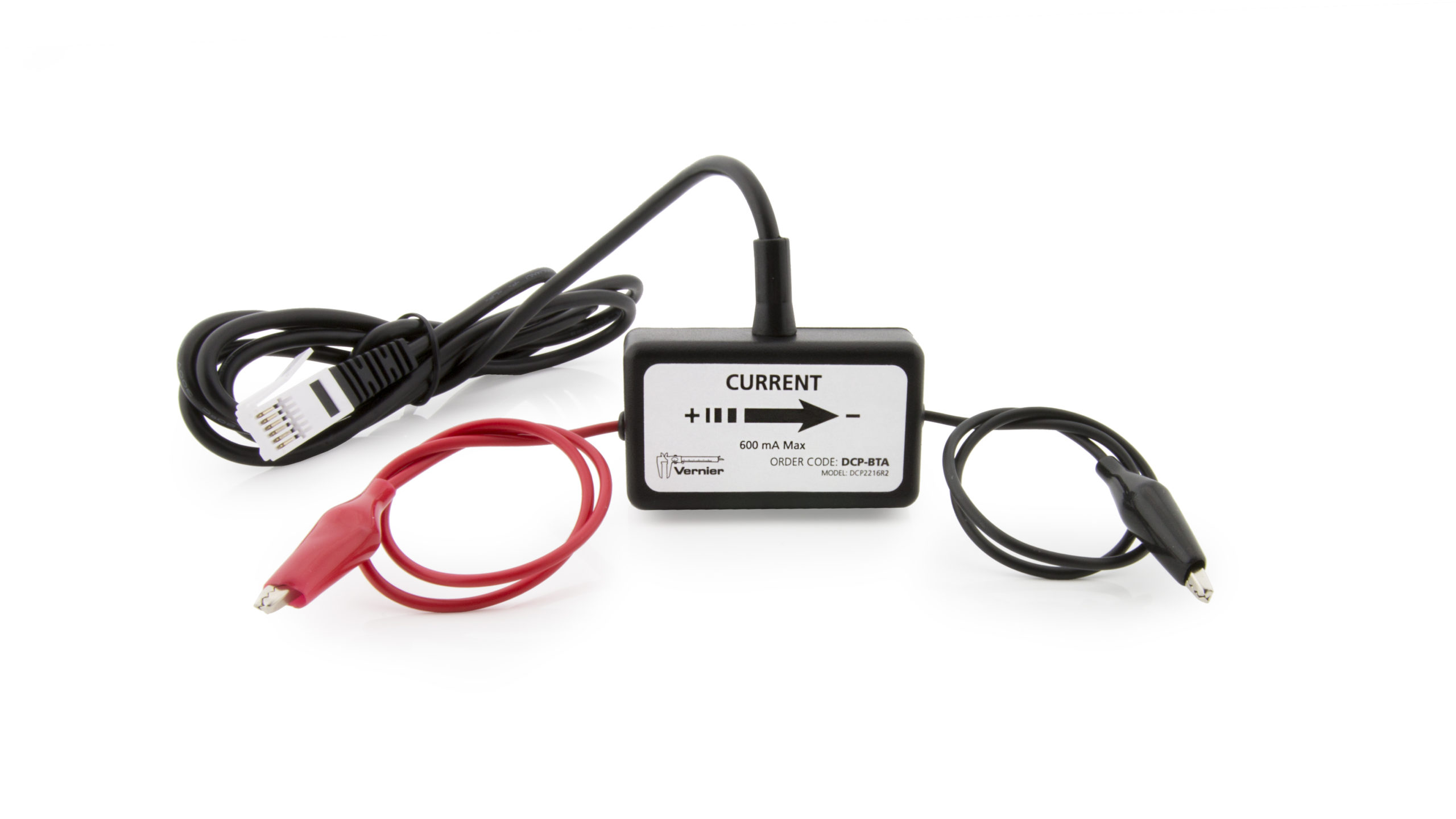Current Probe (DCP-BTA)

Troubleshooting
Primary Test: Plug the probe into an interface and run the data collection program. Use wire leads to connect the probe to a DC supply in series with a known resistance. Use a voltage probe or voltmeter to measure the voltage of the supply. Compare the measured current against the current calculated from Ohms Law. We recommend a battery for this test, since some DC power supplies may not deliver clean DC voltage.
Additional Troubleshooting
- The readings from my Current and/or Voltage Probe are erratic, but if I measure the voltage with a multimeter instead, I get a solid reading. What is wrong with my sensor?
- How can I measure currents outside the range of the Vernier Current Probe?
- What is the overvoltage protection on the Differential Voltage Probe and Current Probe?
- How do I measure currents larger than 0.6 amperes?
- How do I tell if a Current Probe is damaged?
Specifications
- Current Probe Range: ±0.6A
- Maximum Voltage on any input: ±10 V
- Input Impedance
⚬ between inputs: 0.1Ω
⚬ to ground: 10 MΩ - Linearity: 0.01%
- Resolution
⚬ 10-bit: 1.25 mA (CBL, CBL 2, original ULI)
⚬ 12-bit: 0.31 mA (LabQuest – any version, LabPro, Go! Link, ULI II, Serial Box) - Supply Voltage: 5 VDC
- Supply Current (typical): 9 mA
- Output Voltage Range: 0 to 5 V
- Transfer Function: Vout = -4(I) = 2.5
Calibration
Calibrate? No. The probe is set to match the stored calibration before shipping. If you choose to calibrate the probe, conduct a two-point calibration using two known currents.
You may also zero the probe by shorting out the leads and then choosing the Zero option in the data collection program. If you zero the probe, it will adjust the calibration offset but does not adjust the calibration gain.
Related Products
- Vernier Circuit Board 2 (VCB2)
- High Current Sensor (HCS-BTA)
- Go Direct® Current Probe (GDX-CUR)
- Differential Voltage Probe (DVP-BTA)
- Voltage Probe (VP-BTA)
- 30-Volt Voltage Probe (30V-BTA)
- Instrumentation Amplifier (INA-BTA)
- Go Direct® Voltage Probe (GDX-VOLT)
